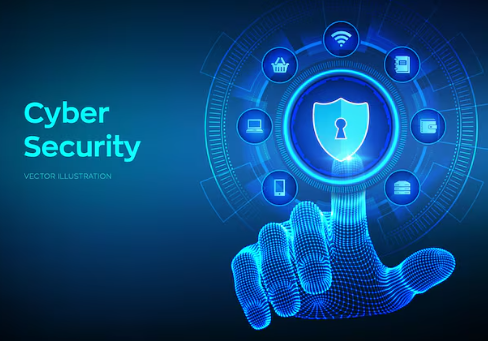Mobile communication has become the backbone of today’s business operations. Employees rely on text messages for verification codes, service alerts, banking notifications, HR updates, meeting reminders, and internal communication. This shift has created a powerful opportunity for cybercriminals to use SMS phishing, also known as SMShing. Attackers impersonate trusted brands or internal departments to steal credentials, push malware, or manipulate employees into taking harmful actions.
Modern businesses cannot afford to ignore this threat. As phishing attacks evolve beyond email, organizations must expand their cybersecurity training to include mobile channels. SMS phishing simulation gives employees hands-on exposure to real-world smishing tactics, strengthens their decision-making abilities, and reduces mobile-driven cyber risks across the workforce. It is now a core component of a mature cybersecurity awareness strategy.
1. Understanding SMS Phishing and Its Modern Threat Landscape
SMS phishing is not only widespread, it is dangerously effective. Unlike email, text messages feel urgent and trustworthy, making employees more likely to respond quickly without verifying authenticity.
Key Insights:
- Attackers impersonate delivery companies, payroll teams, banks, IT departments, or authentication systems.
- Messages often contain malicious URLs disguised as tracking links or verification pages.
- Mobile users react faster and more emotionally, making SMS a high-impact attack vector.
- Since SMS operates outside corporate security filters, detection becomes harder.
Modern businesses must treat SMS phishing as a top-tier cyber threat, not a minor nuisance.
2. Why SMS Phishing Simulation Has Become a Business Necessity
Simulating real SMS-based attacks helps organizations stay ahead of evolving cybercriminal tactics.
Why It Matters:
- SMS phishing bypasses email filtering, gateway scanning, and spam protection.
- Attackers exploit the familiarity and immediacy of mobile communication.
- Employees are less skeptical of SMS alerts compared to corporate emails.
- Simulations reveal hidden vulnerabilities that would otherwise go unnoticed.
- Training creates a measurable improvement in employees’ mobile security behavior.
In a world where business happens on mobile devices, simulation-based learning is the only effective defense strategy.
3. Realistic Training That Builds Long-Term Awareness
Modern SMS phishing simulation tools replicate real attacks with high accuracy.
Employees Learn To:
- Identify spoofed sender IDs and malicious short links.
- Question unexpected password reset requests or OTP prompts.
- Spot suspicious grammar, urgency, or financial claims.
- Analyze message intent before clicking links or replying.
Benefits of Realistic Simulation:
- Training goes beyond theory and builds instinctive caution.
- Repetition helps employees develop pattern recognition.
- Mistakes are corrected safely before real attacks occur.
- Employees learn through experience, the most effective method in cybersecurity.
This experiential training significantly improves resilience across all business units.
4. Minimizing Human Error in Mobile Workflows
Human error plays a role in over 80% of cyber incidents, and mobile communication amplifies this risk.
Simulation Reduces Errors Such As:
- Clicking on unknown URLs disguised as official service links.
- Responding to fraudulent bank alerts or payroll updates.
- Sharing passwords or authentication codes with attackers.
- Falling for “urgent action required” messages.
Why This Matters:
- Mobile devices carry sensitive corporate apps and authentication tools.
- A single compromised device can expose entire networks.
- Reducing mobile mistakes directly reduces breach probability.
By focusing on mobile-specific awareness, organizations eliminate a major attack surface.
5. Supporting Compliance, Risk Governance, and Audit Preparedness
Many global security standards now require organizations to implement continuous phishing and social engineering training.
SMS Simulation Strengthens Compliance With:
- ISO 27001
- GDPR
- SOC2
- PCI-DSS
- HIPAA
- NIST Cybersecurity Framework
Governance Benefits:
- Demonstrates an active human risk management.
- Provides auditable training evidence and employee performance data.
- Reduces regulatory exposure and legal liabilities.
SMS simulation is not just training; it is a compliance necessity.
6. Behavior Analytics: Turning Human Risk Into Actionable Intelligence
SMS phishing simulation platforms provide deep insights into workforce behavior.
Organizations Can Identify:
- Departments with the highest click rates.
- Individuals requiring additional training.
- Behavioral patterns such as impulse clicking or a lack of verification.
- Year-over-year improvement in employee awareness.
Why This Data Matters:
- Training evolves based on real human behavior.
- Leadership teams can measure ROI on awareness campaigns.
- Analytics reduce blind spots and strengthen cyber strategy.
Human risk becomes measurable, manageable, and predictable.
FAQ
1. Why is SMS phishing more dangerous than email phishing?
Text messages feel more personal and urgent, making employees more likely to click instantly without verifying authenticity.
2. How often should SMS phishing simulations be conducted?
Quarterly simulations with monthly reinforcement exercises are ideal for ensuring consistent awareness.
3. Can SMS phishing simulation reduce real-world incidents?
Yes. Companies see significant decreases in click rates and credential leaks after implementing structured smishing simulations.
4. Are small and medium businesses at risk?
Yes. SMEs are major targets due to weaker cybersecurity maturity and limited training programs.
5. Is SMS simulation required for compliance?
Many global standards encourage continuous employee awareness and targeted simulation training.
Conclusion
SMS phishing simulation has become a core component of modern cybersecurity strategy. By training employees to recognize and resist mobile-based threats, organizations significantly reduce human error, strengthen their mobile security posture, and improve overall cyber resilience. Realistic simulations, behavioral analytics, and continuous learning help businesses stay ahead of evolving smishing tactics.
Phish Defense, a human risk management platform, provides industry-leading SMS phishing simulation with real-time analytics, customizable templates, multilingual content, and behavior-based insights. Designed for modern enterprises, Phish Defense empowers teams to understand and avoid mobile-based phishing attacks while transforming human risk into human strength. With advanced simulations across SMS, email, WhatsApp, and voice, Phish Defense helps organizations build a vigilant, cyber-ready workforce.




.png)

Comments